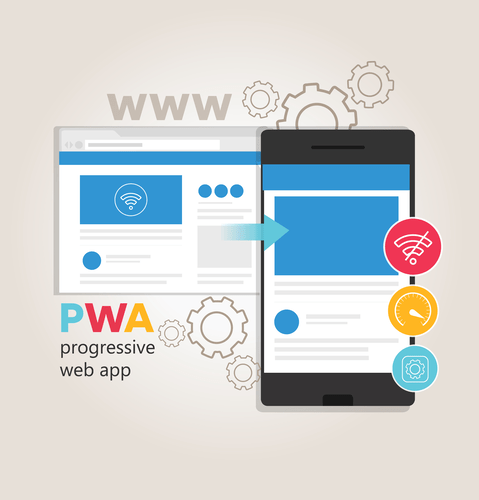Content
Even the best-written code or the most flawless application will result in a poor user experience if problems in the CI/CD pipeline prevent smooth and continuous deployment. A good error monitoring tool gets that data to the developers and operations https://globalcloudteam.com/ teams quickly in all these phases, in a more convenient way then the IDE. Some tools even allow push notifications to your desktop and your mobile device, so that on any particular build, you’ll see the critical errors right away.
And that’s before you look at the opportunity cost of your precious developers writing monitoring code instead of business application code. In continuous delivery, every stage—from the merger of code changes to the delivery of production-ready builds—involves test automation and code release automation. At the end of that process, the operations team is able to deploy an app to production quickly and easily.
Real-time alerts
He is Senior Editor of content and a DevOps Analyst at Fixate IO. This posting does not necessarily represent Splunk’s position, strategies, or opinion.

This monitors if the update has a positive, negative, or neutral effect on user experience. The Chef Cookbook provides detailed instructions on how to set up and use Chef. The Puppet Cookbook provides detailed instructions on how to set up and use Puppet. The Jenkins Cookbook provides detailed instructions on how to set up and use Jenkins.
Implementing Automated Performance Management
We’ve built this alerting mechanism on top of Elasticsearch and OpenSearch as part of our Log Management service, and you can use other supporting alerting mechanisms as well. Once the data is in Elasticsearch, define reports and alerts on top of that data to automate as much as possible. For example, the DoD should receive a daily start-of-day report to slack, to make sure nothing happened during the night that calls for his or her urgent attention. Teams may also want to consider managed CI/CD tools, which are available from a variety of vendors. The major public cloud providers all offer CI/CD solutions, along with GitLab, CircleCI, Travis CI, Atlassian Bamboo, and many others.
Lack of CI/CD observability results in unnecessarily long cycle time, or Lead Time for Changes, which is another crucial metric measuring how much time it takes a commit to get into production. It means your bug fixes, enhancements and new features will be rolled out with delay. Now imagine the frustration of the users waiting for it, of the business that wants to launch it, not to mention the other developers wanting to run their own pipelines and get stuck in the queue. Add to that the unfriendly experience of the Developer on Duty needing to handle failed pipelines on his shift. Incorporate CI/CD tools in your development process to create an automated pipeline, delivering quality code more quickly. Tracing refers to the ability to follow the flow of a request or transaction through the pipeline, from development to production.
Website Monitoring – Features, integrations, alternatives & more
SquaredUp’s enterprise-grade, BI platform for software engineering teams has you covered. With a knowledge graph at its core, SquaredUp connects all your engineering tools and provides analytics on top, so you have complete visibility of everything that matters. Teams try to leverage previous investments in legacy monitoring tools, hoping they will work in their new high-speed environments which unfortunately turns out to not be true.
- In the reactive approach, updates to monitoring systems are here a reaction to incidents and outages.
- Instead, you can rather showcase the pipeline pass rate and run times as a metric and then use your graphing to visualize the problematic pipelines to better explore what is happening there.
- The release process follows a well-defined and structured series of steps.
- OpenTelemetry is the emerging standard for collecting observability data.
- A slowdown in development velocity is expected, especially in the first year of a new application.
- CI/CD operations issues may also make it difficult to test each release against a wide variety of configuration variables.
Others progress into continuous deployment so they can automate the entire software development, delivery, and deployment pipeline. Since traditional APM and monitoring tools were not designed for dynamic applications, a new set of open-source technologies emerged to help development teams manually setup their own monitoring through manual coding. Continuous deployment (the other possible “CD”) can refer to automatically releasing a developer’s changes from the repository to production, where it is usable by customers. It addresses the problem of overloading operations teams with manual processes that slow down app delivery. It builds on the benefits of continuous delivery by automating the next stage in the pipeline.
CI/CD observabilityedit
By applying the same techniques to the CI/CD pipeline itself, you can refine the process of building, testing and releasing your software, which amplifies the feedback loops you use to improve your product. Finally, there are automatic alerting of infrastructure and application performance problems . An efficient alerting mechanism that augments the Continuous Integration and Continuous Delivery pipeline is crucial to support engineering and product velocity. They use built-in alerting to detect failures or anomalous conditions and combine alerts with webhooks to proactively solve problems when they’re detected. Collected data will be used more frequently for analysis and fault resolution.

The process of delivering an application involves several stages such as development, testing, and production monitoring. With the Splunk platform, real-time visibility and understanding can be achieved throughout all of these stages. Splunk provides a powerful platform for CI/CD pipeline monitoring, allowing teams to gain deep insights into pipeline performance, troubleshoot issues quickly, and optimize their development processes. Splunk can ingest data from a wide range of sources, including logs, metrics, and events generated by CI/CD pipeline tools and processes.
DevOps Tools: Automation, Monitoring, CI/CD, and More
Use these auditing tools to look over any changes to the pipeline and put in place a strategy to protect pipeline quality, including automatic checks and manual reviews. The process of building software and running initial tests is known as Continuous Integration . Continuous deployment ci/cd pipeline monitoring is the process of integrating code with infrastructure, ensuring that all tests are passed and policies are followed, and then delivering code into the desired environment. Of course, each company has its procedure, but the essential processes can be summarised as follows.